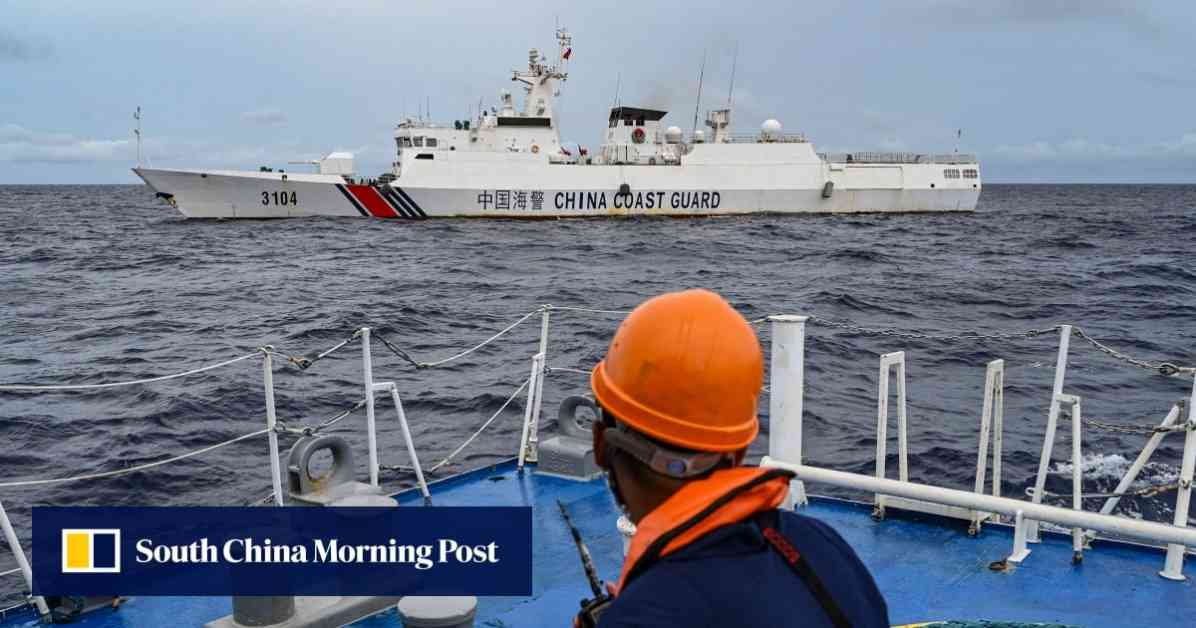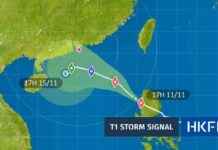Manila’s Response to China’s Claim on Sabina Shoal
The Philippines is facing a critical decision regarding its response to China’s potential takeover of the Sabina Shoal in the South China Sea. Analysts have suggested that Manila is considering various options to counteract Beijing’s actions, including revisiting a previous offer from the United States to escort resupply missions to the shoal. This development comes after the Philippine Navy announced its plans to react to any attempt by China to seize control of the disputed area, which has been a hotspot for maritime tensions between the two nations.
In a recent press briefing, Rear Admiral Roy Vincent Trinidad, the navy spokesman, emphasized the importance of being prepared for any scenario involving the Sabina Shoal. He refrained from speculating on the security implications of a Chinese takeover but assured the public that the Philippine Navy has contingency plans in place. This assurance followed the recall of the BRP Teresa Magbanua from the shoal due to adverse weather conditions, dwindling supplies, and the necessity to evacuate personnel in need of medical attention.
The BRP Teresa Magbanua had been stationed at the Sabina Shoal for five months with the primary objective of deterring China from engaging in land reclamation and island-building activities in the region. Situated approximately 146 kilometers from Palawan and over 1,200 kilometers from mainland China, the shoal holds strategic significance for both Manila and Beijing. The recent clashes between Philippine and Chinese vessels near the Sabina Shoal have heightened tensions and underscored the need for a robust response from the Philippines.
Philippine Options and Strategies
As Manila deliberates on its course of action in response to China’s territorial ambitions in the South China Sea, several options are being considered to safeguard its interests in the region. One such option involves reassessing the offer from the United States to provide escort services for resupply missions to the Sabina Shoal. This move could potentially enhance the Philippines’ ability to maintain a presence in the disputed area and counter Chinese incursions effectively.
Furthermore, Manila could explore diplomatic avenues to rally international support for its stance on the Sabina Shoal issue. By engaging with regional partners and key stakeholders in the South China Sea dispute, the Philippines can amplify its voice and strengthen its position against China’s assertive actions in the contested waters. Multilateral forums and diplomatic initiatives could serve as valuable platforms for the Philippines to garner backing for its sovereignty claims and push back against Chinese aggression.
In addition to diplomatic efforts, Manila may also consider bolstering its naval capabilities and increasing patrols around the Sabina Shoal to deter any further encroachments by Chinese vessels. Enhancing maritime surveillance and coordination with allies in the region could help the Philippines effectively monitor and respond to any provocative actions by China in the South China Sea. By demonstrating its resolve to protect its territorial integrity, Manila can send a clear message to Beijing that any attempt to seize control of the Sabina Shoal will be met with a robust and coordinated response.
Regional Implications and International Response
The escalating tensions surrounding the Sabina Shoal have broader implications for regional stability in the South China Sea, where competing territorial claims have fueled maritime disputes among neighboring countries. China’s aggressive pursuit of territorial expansion in the region has raised concerns among regional powers and international observers about its intentions and the potential for conflict in the area. The Philippines’ response to China’s actions at the Sabina Shoal is being closely watched as a barometer of Manila’s commitment to defending its sovereignty and upholding international law in the South China Sea.
The United States, a key ally of the Philippines, has reiterated its support for Manila’s territorial claims in the South China Sea and expressed readiness to assist in ensuring freedom of navigation and maintaining stability in the region. Washington’s offer to escort resupply missions to the Sabina Shoal underscores its commitment to upholding the rules-based order in the South China Sea and deterring Chinese aggression. The presence of US naval assets in the region serves as a deterrent to Chinese expansionist efforts and reinforces the Philippines’ position in the ongoing territorial disputes.
Moreover, other regional actors such as Japan, Australia, and Southeast Asian nations have also voiced their concerns over China’s assertive behavior in the South China Sea and called for a peaceful resolution to the maritime disputes through dialogue and adherence to international law. The growing consensus among regional powers on the need to uphold the principles of freedom of navigation and respect for sovereignty in the South China Sea reflects a unified front against Chinese unilateral actions and territorial claims.
In conclusion, Manila’s response to China’s claim on the Sabina Shoal will have far-reaching implications for regional security and stability in the South China Sea. By considering a range of options and strategies to counteract Beijing’s territorial ambitions, the Philippines can assert its sovereignty and defend its interests in the disputed waters. Through diplomatic engagement, enhanced naval capabilities, and international cooperation, Manila can effectively push back against Chinese aggression and uphold the rules-based order in the South China Sea. As tensions continue to simmer in the region, the Philippines’ proactive stance on the Sabina Shoal issue will be crucial in shaping the future dynamics of the maritime disputes in the South China Sea.



















